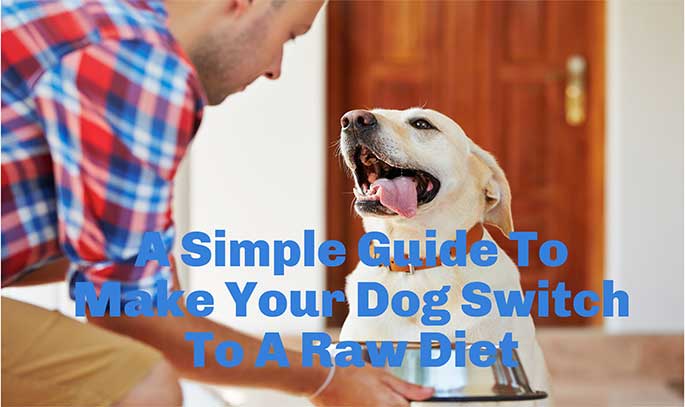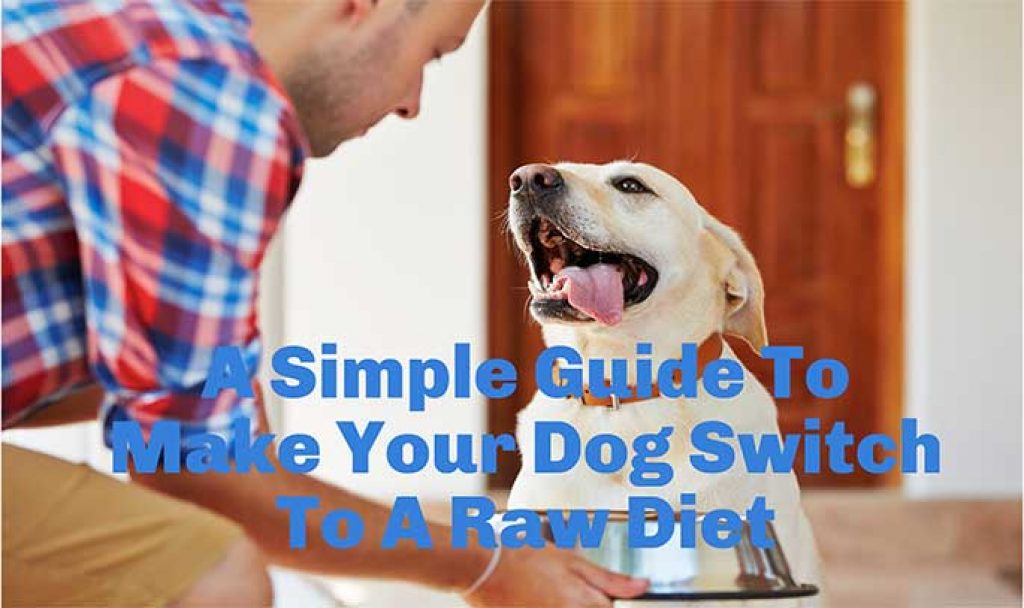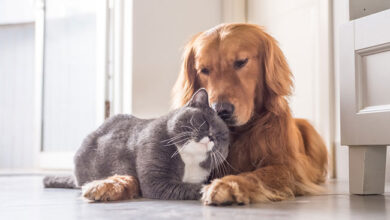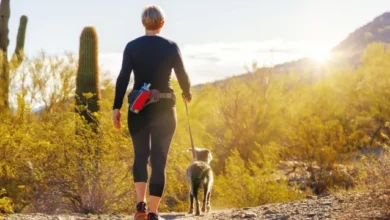
If you are a concerned dog owner, keeping track of your pet’s diet should be your top priority. You will probably know about the raw feeding movement too, which is gaining popularity in recent years. A raw diet for dogs is much acclaimed for the holistic benefits it delivers. As the name suggests, it is made of meats and greens that are uncooked and fresh. The diet is rich in protein and moderate in fat. Further, the carbohydrate content is minimal.

It delivers a host of benefits for your dog, from a leaner build to cleaner teeth, coat and skin improvements, and vibrant energy. So the animal becomes healthier and lives longer with this dietary choice. But the real challenge is to make your dog switch to this diet because you need as much preparation as the canine companion does. The main hindrance is a lack of awareness and concerns about availability. Here are some simple ideas to make the switch.
Read More:
- 3 Tricks for Switching Dog Food Effectively Without Making Your Dog Sick
- 4 Benefits of a Raw Food Diet for Dogs
- What to Feed a Puppy: A Complete Guide (How, What, When, Where)
- Pros And Cons About Feeding a Dog With Raw Meat
- Should You Feed Your Dog Raw Meat?
Educate yourself about raw feeding
The most significant step is to gain knowledge about raw feeding because there are certain misconceptions around it. You can start by watching YouTube videos and researching the internet. Joining raw feeding groups, connecting with local raw feeders, and seeking guidance from a vet who recommends raw foods for pets will also help. It makes sense to go the extra mile with awareness because you need to steer clear of the myths around the diet. Raw food is an excellent choice for dogs, and awareness makes you all the more confident about the switch. Once you know its benefits, you will want to embrace it sooner rather than later.
Build on its appetite
When you just start feeding raw food to the animal, ensure that it has a good appetite through the initial feeding sessions. You can keep it off food for half a day or even let it go without eating for a full day before the first raw meal. It will give you a better understanding of how the animal handles the dietary change. Further, there are good chances that the pet will adjust to the new diet easily if it is hungry during meal times. If all looks good, you can replace its original diet with this one gradually over time.
Transition slowly
Slow and low is the right way to introduce your pet to something new. Remember that it is a creature of habit and needs a good time to get habitual to something different. The same rule applies to barf dog food as well. You can expect an adult dog to get used to the dietary changes within a week, while puppies get comfortable only in a few days. It is because puppies have better digestion as compared to their older counterparts. Even as these are optimal transition spans, you cannot expect a one-size-fits-all period for all dogs.
Ensure safe feeding
Pets that guzzle their food handle raw diets pretty easily. But it can get harder for picky eaters, and owners have to struggle as well. You cannot keep it out for long intervals because it may get contaminated. If the dog leaves the food in the bowl, store it back in the refrigerator until the next mealtime. Gradually, the animal will start liking the food and start eating larger portions in a single meal. But you will have to be patient with the feeding routine till then.
Pay attention to the dog’s digestive health
A dietary transition is hard on animals, and the best way to do it is to take baby steps. It becomes all the more vital if the pet has a history of digestive disorders. A gradual change cuts the probability of a digestive reaction and keeps the animal from getting sick after the transition to a raw diet. Start with small portions according to the size and needs of the animal and gradually increase it. The same goes for the bite-size because the pet will need to adjust to it too. You can consider using digestive aids such as probiotics, trips, and pumpkin during the transition phase to ease digestion.
Monitor its stool
Apart from keeping track of the dog’s inclination towards raw food, you also need to monitor its stool. The purpose is to check how the animal’s digestive system is responding to the transition and when it is ready to move to the next stage of the process. Loose stool indicates that you must go slowly with the new diet, though you can continue working on the change once it starts to firm. Some dogs may detox during the transition, which is visible as mucus coating on their poop. It is nothing to worry about, and things will normalize within a couple of weeks.
Store the diet properly
Even as a raw diet is beneficial for your pet, you need to be extra careful about proper storage. Leaving it at room temperature causes bacteria to multiply quickly and makes the food unsafe for consumption. Keep it on in the refrigerator to ensure safety from bacteria. Follow the instructions on the package because there may be specific ones for the products you buy. You also need to choose storage containers with care. Avoid plastic and opt for ceramic, glass, or metal containers to feed and store the raw diet. Plastic can be as toxic for your pets as for humans, so avoid these containers completely.
Changing the diet of your dog takes some effort and lots of patience. Animals take time to adopt something new, so there are no shortcuts. But when it comes to a raw diet, the effort is worthwhile, considering that it can make your pet happier and healthier in the long run. You will end up cutting down visits and saving up on medical bills as well. The right knowledge helps you to choose a raw diet that matches the needs of your dog. Moreover, the transition phase also becomes easier as you know exactly how to make the animal comfortable with the change.
Popular Post:



